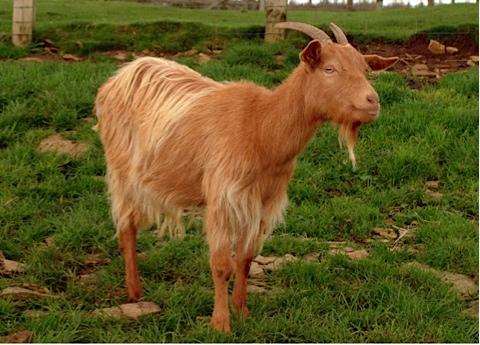Type the name of the breed you're looking for below
[wpdreams_ajaxsearchlite] Don't see the breed your're looking for? Click here and let us know!
Golden Guernsey goats
| Place of Origin | Great Britan, Channel Islands |
| Origin | The Golden Guernsey is a rare breed of goat from the Bailiwick of Guernsey on the Channel Islands. They were first brought to Great Britain in 1965 and a sub-breed has evolved known as the British Guernsey The exact origin of these animals is uncertain but since goat bones have been found in dolmens (a type of Megalithic tomb) as old as 2000 B.C. on the islands, it is likely that the breed began to evolve into its current form about this time. The ancestors of the Golden Guernsey are believed to have been the Oberhasli and Syrian breeds. The first documented reference to the Golden Guernsey in its current form dates from 1826 when reference to a "golden goat" was printed in a guide book. In 1965 the Golden Guernsey was exported to Great Britain and the English Golden Guernsey Club, later to become the Golden Guernsey Goat Society, was formed. |
| Purpose | Milk |
| Characteristics | As its name suggests, the goat is golden in colour, with hues ranging from pale blond to deep bronze. They are smaller and more fine-boned than other British milking goats, and there is great variety in coat length. The males are sometimes horned but the vast majority are not. Their personalities have been described as "very docile, very friendly". The males have been said to be unusually smelly. |
| Other Considerations | The goat is efficient milking livestock for its relatively small size, producing an average yield of 3.16 kilograms of milk per day; this is less than most Swiss goats, but the milk's high butterfat and protein content (3.72% and 2.81%, respectively) makes up for the small yield. |



